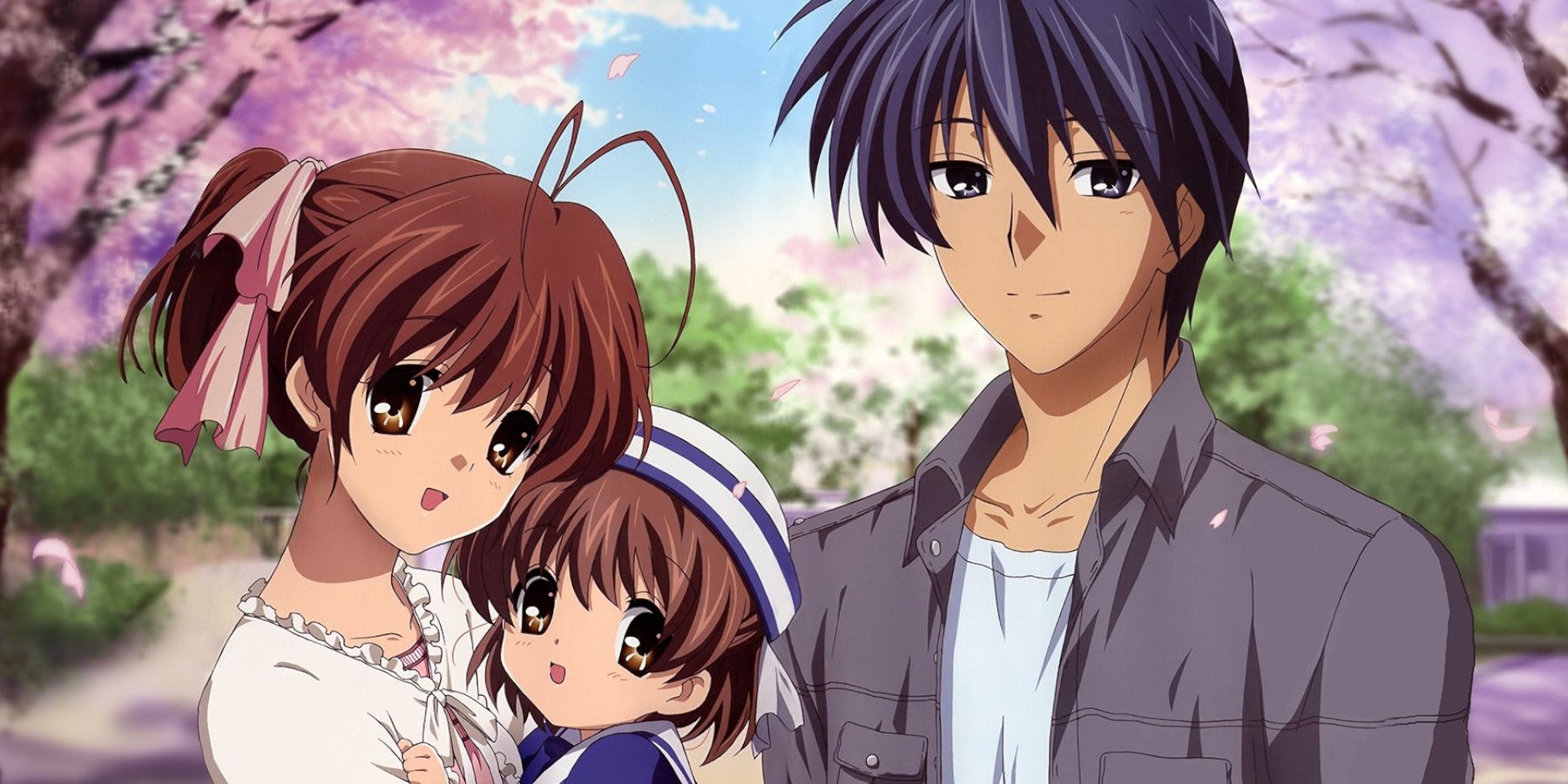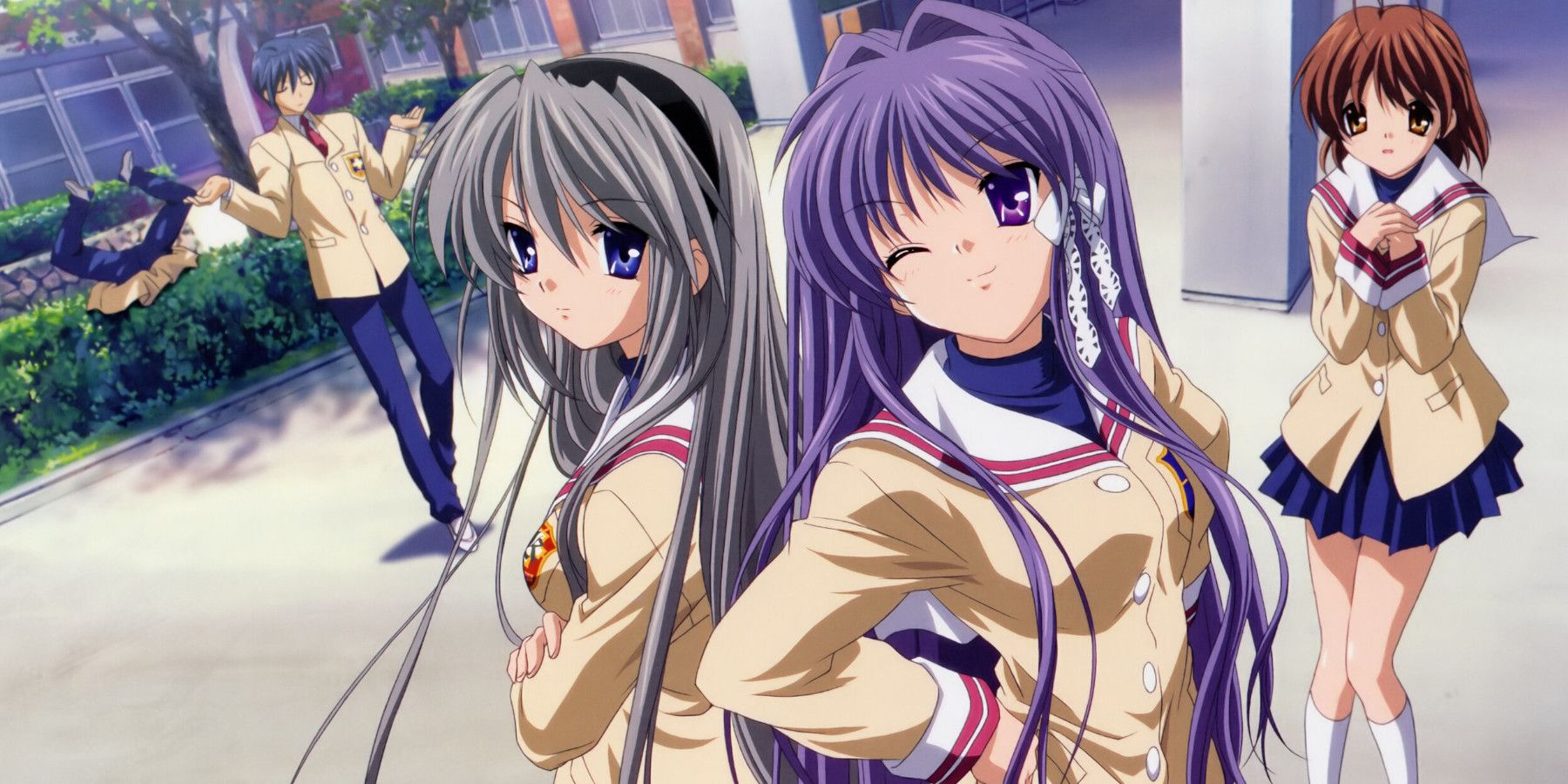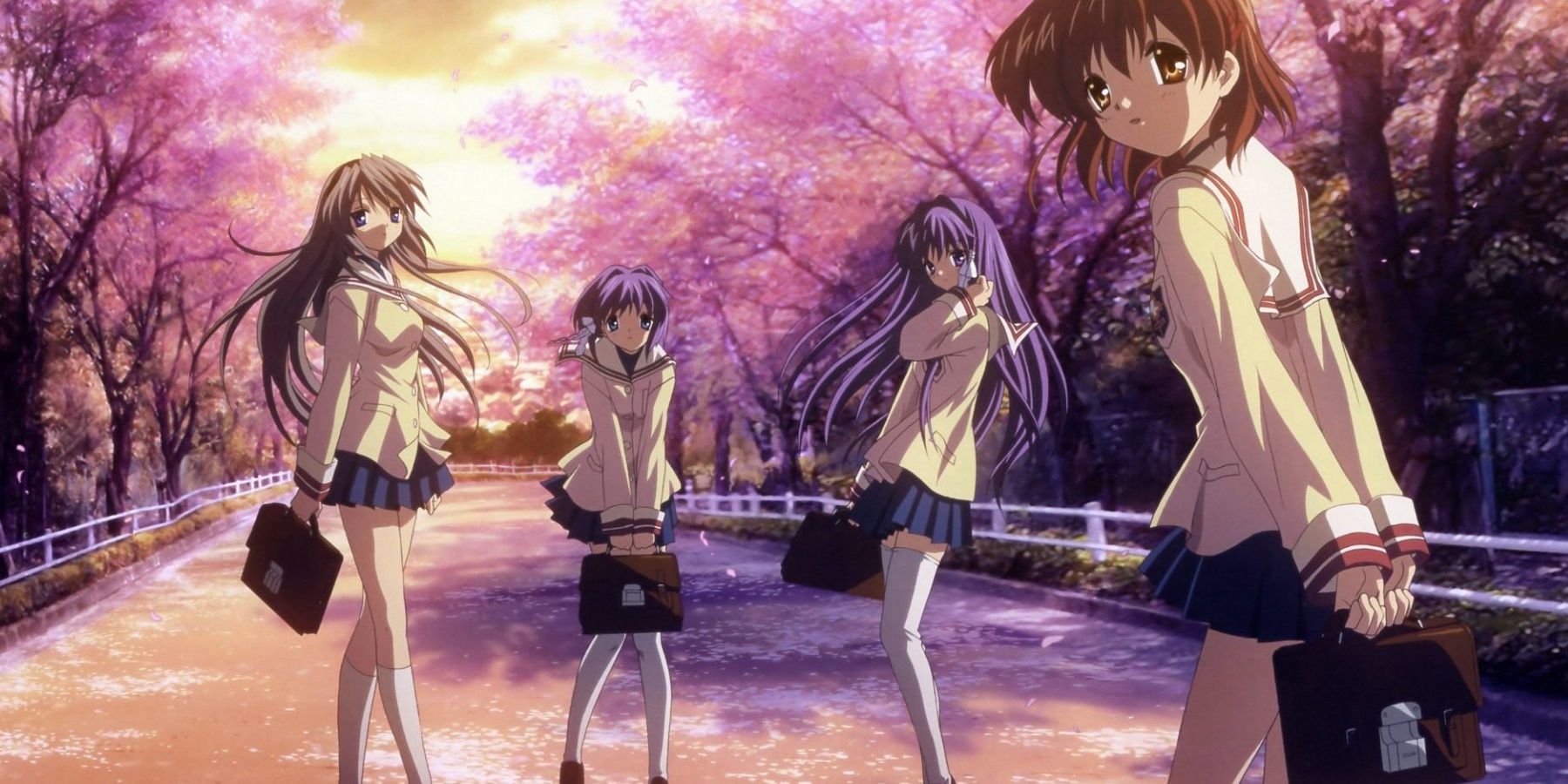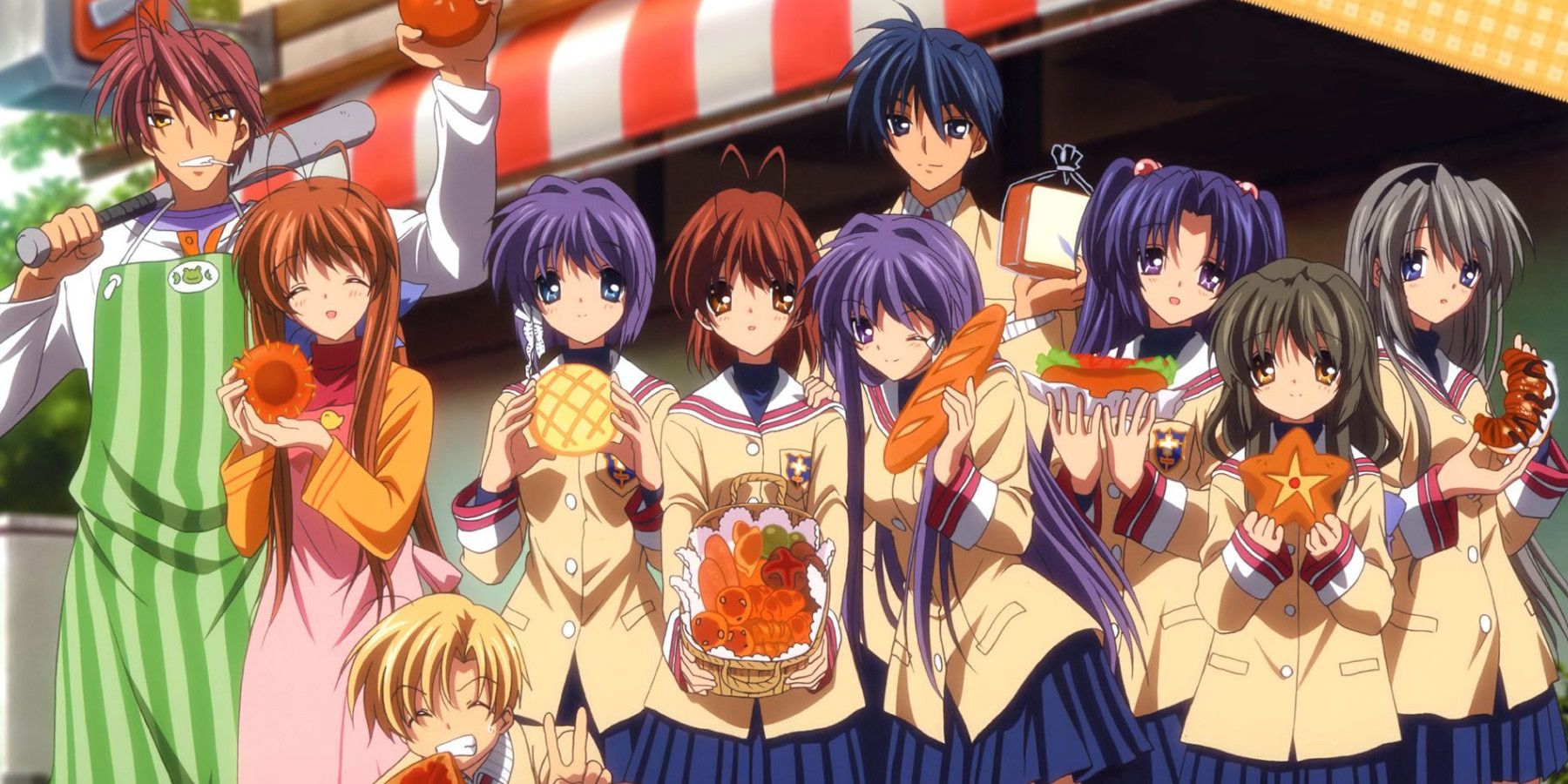The following contains major spoilers for Clannad and Clannad After Story. Proceed with caution.
Clannad is a visual novel developed by Key and released in 2004 and was later adapted to animation in 2007 by Kyoto Animation. It's one of the studio's most beloved classics, heralded for its heart-tugging romance, but also how depressing its story could get along the way. The series tells the story of Tomoya Okazaki, a young man who finds himself helping young women deal with their own unique problems, some pedestrian, some supernatural, but all heavily personal. While each of these girls could be the final romantic pair in the VN, the TV series sees Tomoya fall in love with Nagisa Furukawa.
Clannad might easily pass the bar that most viewers would denote as "good" but to be worthy of the praise it has received over the years should perhaps be more contentious. Looking beyond the extreme emotional reactions that the story elicits from its viewers, how does the show hold up on the whole?
The Importance of Feeling Sad
Are the words "depressing" and "sad" compelling advertisements of something on their own? For some, they might be, say if one is listening to sad music that might relate to how they are feeling. However, in narrative mediums, it's far more likely that people enjoy media that is depressing because of what that media has to say.
A movie like A Silent Voice might be called depressing, but likely in the same breath as it is called "beautiful" or "poignant." To watch anything and have a strong emotional reaction means that the work resonated with you. Clannad is a series adept at creating moments that pull at the heartstrings, but that wouldn't mean much if hadn't put in the work to do so.
Someone can watch any individual scene from a flawed show like Guilty Crown and find themselves taken in by the passionate direction, artwork, music, and performances. But it doesn't fix the characters, or how cluttered the storytelling is. Those moments on their own can be impressive art moments, but be let down by the foundation.
The Oddities of Clannad
There are a few things that make Clannad weird. One of the early hurdles is the character writing, especially Nagisa who, despite technically being older than the others, can be childish and perhaps annoyingly so. It's a byproduct of the story being heavily Moe, something which similarly influences the artwork, though the characters can grow on you.
While certainly a matter of taste, its character designs are not one of the factors that have aged particularly well. Anime is broadly characterized by large eyes, but Clannad's art takes the philosophy to new levels unmatched in the history of Moe. This is in spite of the fact that the animation is excellent across the board.
Far more importantly, Clannad has elements of the supernatural that might be surprising to new viewers who figured it was just a sad slice-of-life show. The supernatural elements are sparse enough that one might not dub it supernatural, but they're frequent enough to have importance to the story.
The biggest example is the story of "The Girl in the Illusionary World." It's a dreamlike side story that runs adjacent to the show, about a girl and a junk robot trying to escape their reality. It's very strange and doesn't become relevant until the very end. However, while it might be jarring, it doesn't say much about the quality of the rest of the series.
Despite what the headline might imply, this isn't about saying this series is bad. Here's the twist: Clannad IS good, even when putting aside the biggest moments that fans think of when they reflect on this series. It is incredibly charming, funny, and well-animated, even if the character designs are an acquired taste. And aside from that, it is a very patient series - especially Clannad: After Story.
So many love stories only progress until the moment that the romantic leads get together, but the second season spent just as many episodes as the first going further. It asked how Tomoya and Nagisa would venture into the uncertain and scary future of adulthood together. To a young audience watching it, those prospects are undoubtedly just as scary.
Clannad's problem was never that it hadn't built a solid foundation to earn its heart-tugging moments. Its issue was that the biggest, most depressing, most defining moment of Clannad - its ending - is kinda broken.
The End of Clannad
Halfway through After Story, Tomoya and Nagisa graduate, get married and very soon get pregnant with their first child. Everything seems to be going swimmingly until Nagisa's illness, combined with the labor of childbirth takes her life soon after the birth of their daughter Ushio. Tomoya spends years estranged from his daughter until he pushed himself to be her father.
There's a feeling of closure and Tomoya is able to move on. But Ushio ends up having the same illness as Nagisa and dies on a snowy Winter night just like her mother. To add insult to injury, Tomoya seemingly dies from grief right on the spot. It is then revealed that the girl from the Illusionary World is Ushio and Tomoya is the robot. It's all a little vague, but Tomoya basically ends up wishing to rewrite time to be with Nagisa and Ushio again, and the wish comes true.
Now obviously, it's one thing to read what happens in two paragraphs and another entirely to experience the show's storytelling and how they spin the yarn. But does this sound like a satisfying ending to a 44-episode TV series that has been called one of Kyoto Animation's best?
The ending of Clannad doesn't give the characters agency or any kind of realistic lesson to take away from the affair. Tomoya lost everything and only got it back thanks to a miracle. It can't be called anything else because even judging by the Illusionary World story, the characters had no agency either.
The machine they built to "escape" never got completed. So the ending mercifully grants the audience a happy ending without having to work to get there. If the whole point of the Illusionary World story was to escape, why not have them succeed? The robot could have pushed onward and completed the machine, like Tomoya harnessing some otherworldly power to rewrite time and take the story into his own hands.
Clannad might have been outshone by Kyoto Animation's more recent works, but it still possesses a great amount of heart thanks to its characters and its warm story of love. However, the flaws of its ending and the way that it arguably robs the story of a true conclusion are often overlooked. Of course, none of this is meant to invalidate the emotions of those to whom this series meant a great deal.
Clannad was a story that put a lot of time into its characters and with the kind of story it was telling, anything less than a happy ending would have felt like it was for nothing. In the end, this dreamlike escapist love story refused to let even certain death stop a happy ending. So maybe it was for the best. Be honest: it could hardly have been a better ending if they stayed dead.




